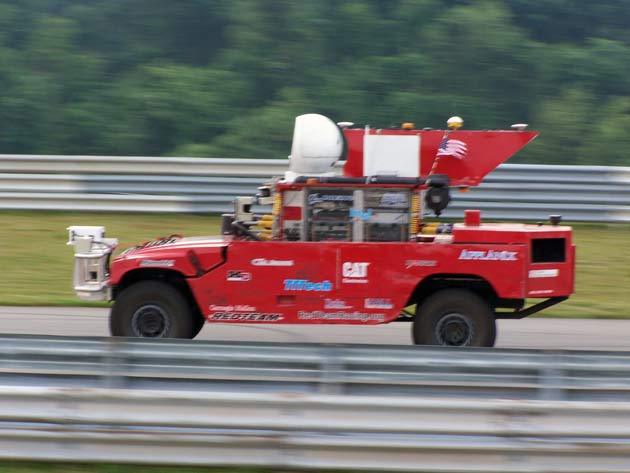Robotic Hummer Sets Speed and Distance Records

A robotic Hummer set records for speed, distance and duration in a recent test prior to a $2 million Defense Department competition later this year.
Carnegie Mellon University's robotic Sandstorm vehicle, a Hummer converted to operate autonomously, covered 200 miles in seven hours without human help during a July 4 test, team members announced today.
Sandstorm will be one of 40 robots competing in the 2005 DARPA Grand Challenge, a 175-mile desert race with a $2 million winner-take-all prize. No vehicle managed to finish the challenging course last year.
The Sandstorm vehicle uses sensors to see and computers to drive. During the test, it covered 131 laps on a 1.5-mile racecourse at the BeaveRun MotorSports Complex 4near Pittsburgh. It averaged 28 mph and hit a top speed of 36 mph.
"That doesn't sound like a big deal for a human-driven car, but it is a very big deal for the pioneering of computer-driven vehicles," said robotics professor William L. "Red" Whittaker, leader of Red Team Racing.
Wittaker said the terrain will be much tougher for the actual race Oct. 8 in the Mojave Desert.
"We are a desert racing team without a desert, so we test on local sites," Whittaker said. "Sandstorm ran a quick pace on this track, but the Mojave will not be so easy or forgiving. On July 4, we learned that our hardware and software are reliable, and that is important. To finish first, you must first finish."
Get the world’s most fascinating discoveries delivered straight to your inbox.
Qualifying races will be held Sept. 26 to Oct. 6 at the California Speedway at Fontana, where 40 vehicles will be whittled to 20.

